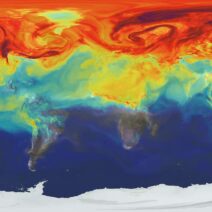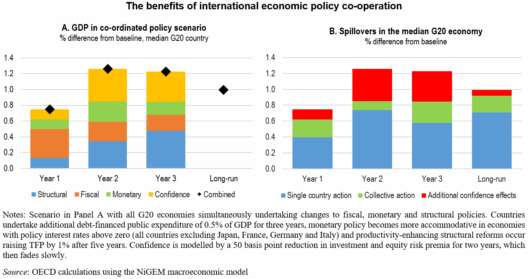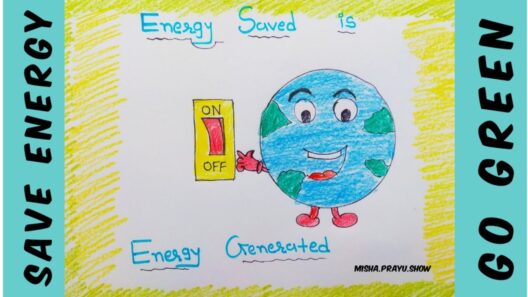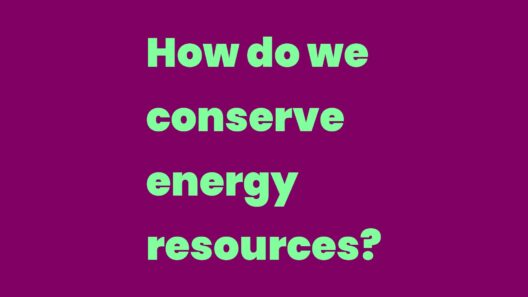Energy conservation is a principle enshrined in the annals of physics, a cornerstone concept that has profound implications across diverse fields such as engineering, environmental science, and sustainability. At its core, the phrase ‘energy is conserved’ signifies that energy cannot be created or destroyed; it can only change forms. Understanding this principle is crucial for grasping various phenomena, from the simplest mechanical systems to the most complex ecosystems.
To appreciate the full breadth of energy conservation, one must first delve into the various forms energy can take. Kinetic energy, the energy of motion, exemplifies one of the most palpable manifestations of this concept. For instance, when a ball rolls down a hill, its potential energy—derived from its height—converts into kinetic energy as it accelerates. Upon reaching the bottom, this kinetic energy can further be transformed into other forms, such as thermal energy through friction. This interplay exemplifies energy’s transformative nature.
Potential energy, on the other hand, is stored energy awaiting conversion. It is the latent energy held by objects due to their position or state. A coiled spring or a raised weight embodies potential energy, poised to unleash its stored force. The transformational dance between potential and kinetic energy illuminates the conservation principle well. Here, energy’s inherently dynamic character comes into focus, demonstrating that while energy may shift between states, the total quantity remains constant, forming a closed loop of energy transfer.
Beyond the realm of simple mechanical systems, the concept of energy conservation permeates our understanding of thermodynamics, a branch of physics concerned with heat and temperature and their relation to energy and work. The First Law of Thermodynamics, often encapsulated in the assertion that energy cannot be created or destroyed, essentially encapsulates the conservation of energy principle. This law governs not only the mechanical realms but also the intricate interactions within chemical systems, where reactants’ potential energy transitions into kinetic energy during reactions, ultimately leading to the release of heat.
In the context of biological systems, the importance of energy conservation becomes even more pronounced. Living organisms rely on intricate networks of energy transfer to sustain life. Through processes like photosynthesis, plants convert solar energy into chemical energy stored in glucose molecules. This energy is subsequently harnessed by the plant itself and transferred to consumers, such as herbivores, and further up the food chain. The law of conservation remains evident in ecosystems, as energy flows from one trophic level to another, underscoring an unbroken continuum while emphasizing that energy, although transformed, is fundamentally unchanged in amount.
In our contemporary context, one cannot discuss energy conservation without addressing its critical importance in environmental sustainability. The relentless consumption of fossil fuels has propelled our society into environmental degradation. The conservation principle provides an essential framework for understanding our energy challenges. By recognizing that energy must be conserved and not wasted, we can inform our approaches to renewable energy sources, energy efficiency improvements, and sustainable practices. For instance, transitioning to wind or solar energy harnesses infinitely available natural forces while upholding the conservation principle by converting ambient energy into usable forms, offsetting the depletion of finite resources.
Furthermore, the conservation of energy can serve as a guiding principle for enhancing energy efficiency. In industrial sectors, energy audits reveal where energy is siphoned off through inefficiencies and malpractices. By instituting systems aimed at optimizing energy use—such as cogeneration, waste heat recovery, and improved insulation—industries can ensure that more of the energy consumed is converted into productive work, creating a ripple effect that benefits the broader environment.
Moreover, the conservation of energy necessitates a systemic perspective, transcending individual actions. Collective efforts towards energy conservation, such as nationwide energy policies, subsidies for renewable energy, and public awareness campaigns, can foster a culture of sustainability. Educational initiatives aimed at elucidating the importance of conserving energy can empower individuals to adopt energy-saving practices in their daily lives, ultimately leading to a reduction in carbon footprints and fostering a sustainable future.
Engaging with this concept also prompts a discussion about technological advancements. Innovations such as smart grids and energy storage solutions are born from the imperative to optimize energy consumption. Smart grids leverage technology to manage energy distribution efficiently, allowing for real-time monitoring and adjustments that reflect the principles of energy conservation. Energy storages, such as advanced batteries, capture excess energy generated during peak times, only to redistribute it when demand exceeds supply. These advancements embody the vision of utilizing modern technology to adhere to the conservation of energy while meeting the needs of a growing population.
In conclusion, the principle that ‘energy is conserved’ has ubiquitous applications, informing everything from fundamental physics to modern engineering and environmental policies. Its implications reach deeply into our ecological interactions, underpinning the fundamental processes that sustain life, drive innovation, and guide sustainable practices. Understanding and embracing this concept is not merely an academic exercise but a crucial strategy in navigating the complex energy landscape of the 21st century. From fostering responsible stewardship of resources to catalyzing transformative changes in energy production and consumption, the conservation of energy serves as an enduring guide in our quest for a sustainable future.







